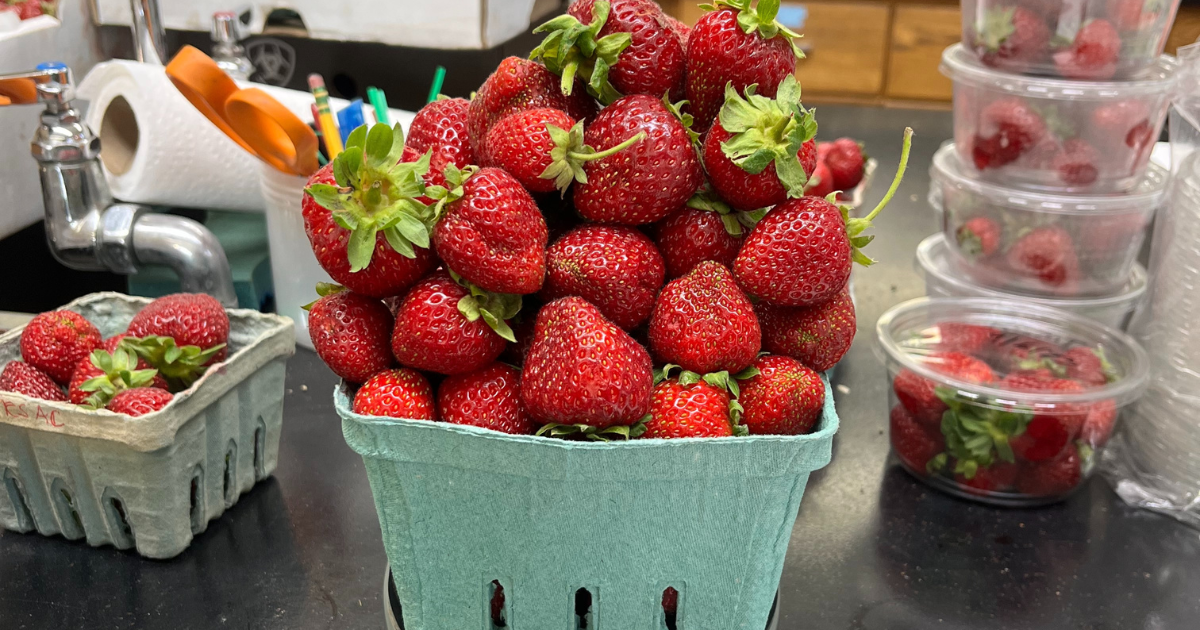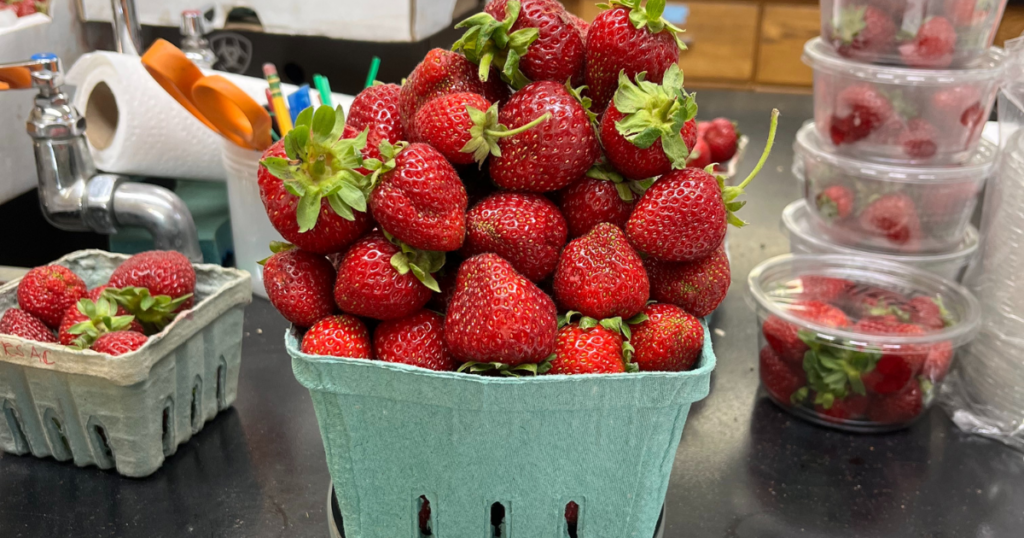Controlled Environment Produced Plantlets from Cornell

Article and photography by Ava Forystek
Over the past summer, graduate student Ava Forystek and Dr. Courtney Weber at Cornell University’s Agritech Campus ran a field trial to evaluate the phenotypic differences between bare root field propagated strawberry plantlets and controlled environment (CE) produced plug plants. The sustainable production of reliable strawberry plantlets is critical for the success of the US strawberry farming industry. The current industry standard method of strawberry propagation process is complex, costly, and time consuming. Virus-indexed mother plants are propagated in methyl-bromide (MB) and chloropicrin treated fields for 2-3 years and propagules are then sold as bareroot plantlets to growers. Because of plant susceptibility and high levels of soil-borne pathogens, field propagation is reliant on soil disinfestation treatments such as fumigation.

To address the issues with the current production system, the utilization of a controlled environment (CE) strawberry propagation system was proposed. CE systems are not reliant on MB applications and plants are not exposed to soil-borne pathogens, allowing for a higher level of certainty in the production of clean plantlets. While these qualities are promising, it is critical to understand if CE produced plantlets can perform equally well as or better than strawberry plantlets produced via field propagation. The main objective of my research is to determine how strawberry plantlets produced in a CE setting perform compared to bare root plantlets produced under standard production practices in a field setting. With the fruit quality data collected and analyzed thus far, strawberry plants originally propagated in CE perform equally well or better than bareroot plants.
Cultivars ‘Albion’, ‘Cabrillo’, and ‘Monterey’ were grown in a plasticulture system under low tunnels with four replications. The plants were grown according to industry standards and 15 contiguous plants from each plot were flagged for fruit collection. Fruits were harvested 3x per week throughout the growing season (May-October) and were frozen to analyze throughout the winter. Plant-related data was collected throughout the growing season.
With the data analyzed thus far we have found that strawberry plants originally propagated in a controlled environment perform equally or better than plants propagated per industry standard. It was also observed that the extent of the impact of the treatment varies between cultivars. One particularly interesting finding was that the differences in plant performance are most notable in the early season, which could provide New York state growers with an early season advantage over their competitors.
Collected data and samples will continue to be analyzed to gain a broader understanding of the differences between CE and industry standard produced plantlets.
- Categories: